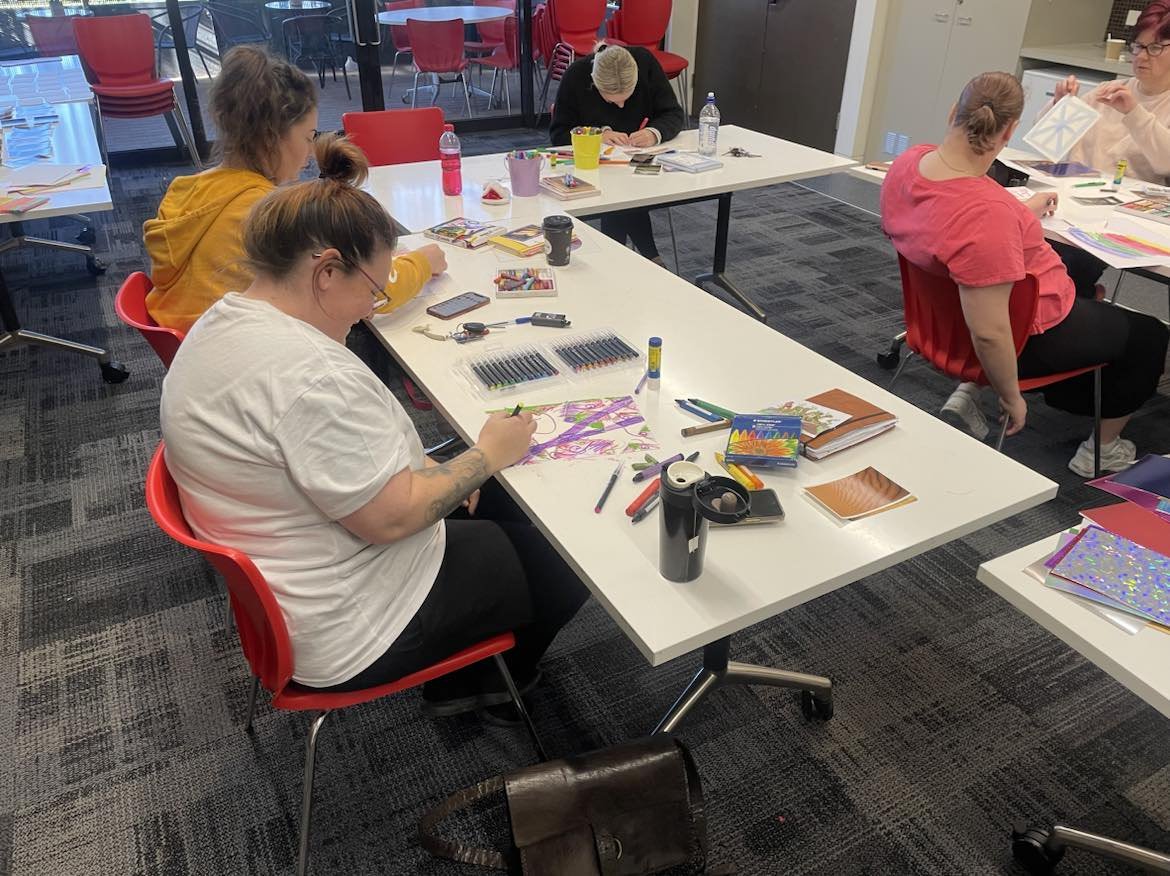
NDIS PARTICIPANTS
NDIS Participants
Art Therapy is a therapeutic modality that promotes mental, emotional and psychosocial well-being, through the facilitation of therapist-led, client-centred enquiring into lived experience.
Through combining verbal and creative enquiry, clients are encouraged to discover ways in which they can better understand and express themselves - especially during times when verbal expression may be hard to access.
For those living with disability, the ability to access what and how they feel - about themselves, those closest to them and their everyday lived experience, can often be met with additional layers of complexity.
It’s vitally important for me when working with those who identify as living with disability to provide therapeutic support that promotes a caring, accepting and safe environment.
Whether working with a client in a 1:1 or group capacity, I place a strong emphasis on integrating activities that work towards a client’s NDIS plan goals, whilst remaining focused on addressing the NDIS’s need for supports that are both “reasonable” and “necessary”.
Areas of expertise include:
Goal setting
Anxiety/Depression
Understanding identity
Relationship building
Emotional regulation
Low self-esteem
Sexuality & gender
Areas a client may focus on, include:
developing a deeper understanding of how their lived experience informs their decision-making.
building social skills and gaining a sense of community.
exploring feelings and/or thoughts impacting their mental health.
learning what their relationship to specific daily living skills is.
Potential benefits to client:
Better understanding their relationships to others, as well as themselves.
Gaining new perspectives on lived experience.
Ability to better manager anxiety and stress.
Increase in self-esteem & self-confidence.
What does a session typically look like?
I value being able to offer clients a variety of art “modalities” with which they can work.
The initial sessions are focused on building a sense of safety and trust with a client, as well as providing the opportunity to understand a client’s level of comfort in expressing themselves through creative practices.
Generally speaking, “journalling” is integrated at the start of each session. (An explanation of journalling can be found on the FAQ page)
“Really listening requires an attitude which respects the other’s experiences and stories”, and that, “deep listening is a way of being attentive and present in the moment, and requires an attitude of being attuned to and aware of the other.”
- McInernery, 2012



